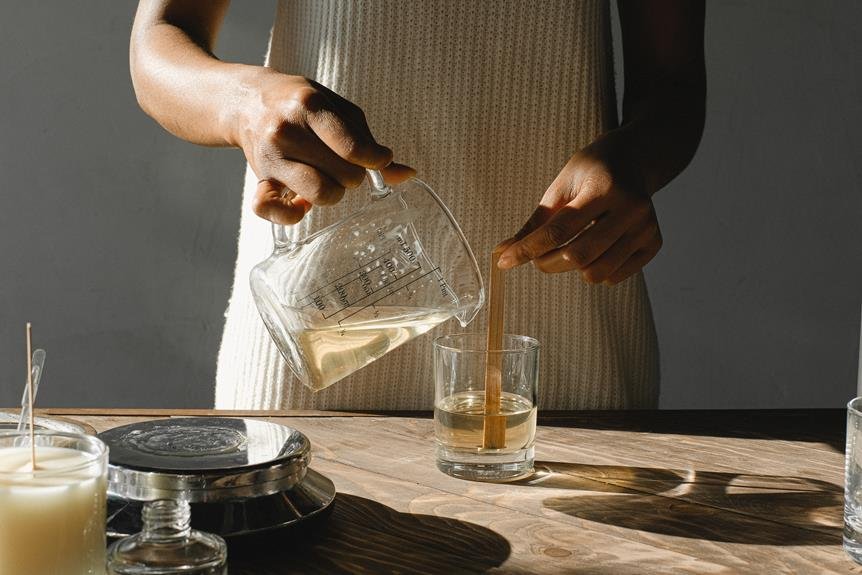Did you know that black mold could potentially cause rheumatoid arthritis?
In this article, we will explore the potential link between black mold and this chronic autoimmune disease. By understanding the symptoms of black mold exposure and exploring treatment and prevention options, you can gain valuable insights into the possible connection between these two conditions.
Stay informed and learn how to protect yourself from the potential risks associated with black mold and rheumatoid arthritis.
Key Takeaways
- Rheumatoid arthritis is a chronic autoimmune disease where the immune system mistakenly attacks its own tissues, primarily targeting the joints.
- Genetic factors increase the risk of developing rheumatoid arthritis, while environmental factors like smoking and certain infections may also contribute to its development.
- Black mold, also known as Stachybotrys chartarum, thrives in damp and humid environments and produces mycotoxins that can cause respiratory issues, allergies, and neurological symptoms.
- While there is some evidence suggesting a potential link between black mold exposure and rheumatoid arthritis, more research is needed to establish a definitive connection.
Understanding Rheumatoid Arthritis
If you want to understand rheumatoid arthritis, start by learning about the immune system's role in this chronic inflammatory disease. Rheumatoid arthritis is an autoimmune disorder, meaning that the body's immune system mistakenly attacks its own tissues. In the case of rheumatoid arthritis, the immune system primarily targets the joints, causing pain, swelling, and stiffness.
The immune system plays a crucial role in maintaining the body's overall health and protecting it from harmful invaders such as bacteria and viruses. However, in individuals with rheumatoid arthritis, the immune system becomes overactive and starts attacking healthy joint tissues. This leads to chronic inflammation and damage to the joints over time.
Research has shown that certain genetic factors can increase the risk of developing rheumatoid arthritis. Additionally, environmental factors such as smoking and exposure to certain infections may also contribute to the development of the disease. Understanding these risk factors can help researchers develop targeted treatments and interventions to manage and prevent rheumatoid arthritis.
What Is Black Mold
Black mold is a type of fungus that can pose health risks to individuals who are exposed to it. Here is some information to help you understand what black mold is:
- Appearance: Black mold, also known as Stachybotrys chartarum, is a greenish-black mold that thrives in damp and humid environments. It often appears as slimy and can have a musty odor.
- Toxicity: Black mold is known for producing mycotoxins, which are toxic substances that can be harmful when inhaled or ingested. These mycotoxins can cause a range of health problems, including respiratory issues, allergic reactions, and even neurological symptoms.
- Common Locations: Black mold can be found in areas with moisture problems, such as leaky pipes, water-damaged buildings, or areas with high humidity levels. It can grow on various surfaces, including drywall, carpeting, insulation, and wood.
- Prevention and Removal: To prevent black mold growth, it's essential to control moisture levels in your environment. Fixing leaks, improving ventilation, and promptly addressing water damage can help prevent its growth. If you suspect black mold in your home, it's important to hire a professional mold remediation service to safely remove it.
Understanding what black mold is and how it can affect your health is crucial in taking necessary precautions to prevent exposure and maintain a safe living environment.
The Potential Link Between Black Mold and Rheumatoid Arthritis
Exposure to black mold has been investigated for its potential link to the development of rheumatoid arthritis. While there's ongoing research, current evidence suggests that the relationship between black mold and rheumatoid arthritis is complex and not fully understood.
Black mold, also known as Stachybotrys chartarum, produces toxic compounds called mycotoxins. These mycotoxins have been shown to have harmful effects on human health, including respiratory symptoms, allergies, and immune system dysfunction. Some studies have suggested that exposure to black mold may trigger or exacerbate autoimmune diseases, such as rheumatoid arthritis.
One possible mechanism by which black mold may contribute to the development of rheumatoid arthritis is through the activation of the immune system. It's hypothesized that exposure to black mold may stimulate an immune response, leading to the production of antibodies that attack the body's own tissues, including the joints.
However, it's important to note that the current evidence is limited and more research is needed to establish a definitive link between black mold and rheumatoid arthritis. Other factors, such as genetic predisposition and environmental triggers, also play a role in the development of rheumatoid arthritis. Therefore, it isn't accurate to solely attribute the development of rheumatoid arthritis to black mold exposure.
Symptoms of Black Mold Exposure
You may experience various symptoms if you're exposed to black mold. Here are some common signs that you might encounter:
- Respiratory issues: Black mold can irritate your respiratory system, leading to symptoms such as coughing, wheezing, and shortness of breath. If you already have asthma or allergies, exposure to black mold can exacerbate these conditions.
- Allergic reactions: Some people may develop allergic reactions to black mold. These can include sneezing, runny nose, itchy eyes, and skin rashes. These symptoms are similar to those caused by other common allergens.
- Fatigue and weakness: Prolonged exposure to black mold can cause fatigue and weakness. This can be attributed to the toxins released by the mold, which can affect your overall well-being.
- Neurological symptoms: In rare cases, black mold exposure may lead to neurological symptoms such as headaches, dizziness, memory problems, and difficulty concentrating. These symptoms may be more severe in individuals with pre-existing conditions or compromised immune systems.
It is important to note that these symptoms can vary from person to person and depend on the duration and intensity of the exposure. If you suspect black mold in your environment and experience any of these symptoms, it's advisable to seek medical attention and address the underlying cause of the issue.
Treatment and Prevention Options for Black Mold and Rheumatoid Arthritis
If you suspect black mold in your environment and experience symptoms of black mold exposure, it is important to understand the treatment and prevention options for black mold and its potential connection to rheumatoid arthritis. While there is limited research on the direct link between black mold and rheumatoid arthritis, taking steps to prevent and treat black mold can have numerous health benefits.
Treatment Options for Black Mold Exposure:
| Treatment Options | Description |
|---|---|
| Remove the source of mold | Identify and eliminate any areas of moisture or water damage to prevent further mold growth. |
| Clean affected areas | Use a mixture of detergent and water to scrub surfaces affected by black mold. Wear protective gear such as gloves and a mask to avoid exposure. |
| Seek professional help | In severe cases, it may be necessary to hire a professional mold remediation company to safely remove the mold and prevent future growth. |
Prevention Strategies for Black Mold:
| Prevention Strategies | Description |
|---|---|
| Control moisture levels | Keep indoor humidity below 60% to discourage mold growth. Use dehumidifiers or exhaust fans in areas prone to moisture, such as bathrooms and kitchens. |
| Fix leaks promptly | Repair any leaks in pipes, roofs, or windows to prevent water damage and subsequent mold growth. |
| Improve ventilation | Ensure proper airflow and ventilation in your home to reduce moisture buildup. Open windows when weather permits and use fans or air purifiers to circulate air. |
| Regular cleaning and maintenance | Regularly clean surfaces prone to mold growth, such as bathrooms and basements. Vacuum carpets and upholstery regularly to remove mold spores. |
Conclusion
In conclusion, while there's ongoing research exploring the potential link between black mold and rheumatoid arthritis, there's currently insufficient evidence to establish a direct causative relationship.
However, it's important to be aware of the symptoms of black mold exposure and take necessary precautions to prevent its growth.
If you suspect black mold in your environment, seek professional help for proper evaluation and remediation.
Consult with a healthcare professional for accurate diagnosis and management of rheumatoid arthritis symptoms.






0 Comments